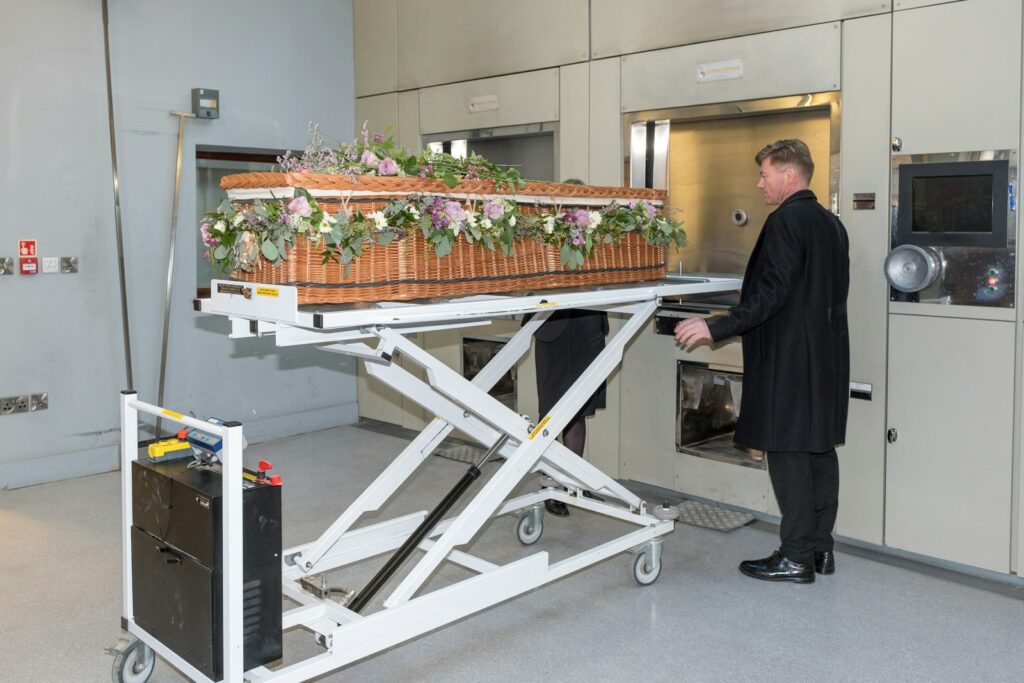Cremation is a widely chosen method of body disposition, offering an alternative to traditional burial. The process involves several important steps to ensure dignity, safety, and legality. Here is a detailed overview of how bodies are prepared for cremation:
Obtaining Legal Documentation
Before cremation can occur, several legal documents must be obtained to ensure compliance with state and local regulations. These typically include:
- Death certificate: This certifies the person’s death and must be filed with local authorities.
- Cremation authorization form: This form must be signed by the next of kin or the person legally authorized to make decisions about the deceased.
- Medical examiner’s approval: In some cases, approval from a medical examiner or coroner is required, especially if the death was sudden or under suspicious circumstances.
Identification and Verification
After the legal paperwork is complete, the crematory ensures the correct identification of the body. This step is crucial in preventing any mix-ups. The body is typically tagged with an identification bracelet or a numbered metal disc, which stays with the body throughout the cremation process and afterward to ensure the remains are returned to the rightful family.
Preparation of the Body
Once identified, the body is prepared for cremation:
- Cleaning: The body is usually bathed and cleaned, though there is no embalming unless requested (for a viewing before cremation).
- Clothing: Depending on the family’s wishes, the body may be cremated in clothing or a simple shroud. Some families choose to provide special attire, while others may opt for the body to be cremated in the clothes worn at the time of death.
- Removal of Medical Devices and Implants: Any medical devices, such as pacemakers, are removed before cremation. Pacemakers, in particular, must be taken out because their batteries can explode under high temperatures, posing a danger to the cremation chamber and personnel.
Placing the Body in a Cremation Container
The body is then placed in a suitable cremation container. This container is required by law and serves several purposes:
- Safety and dignity: It maintains the dignity of the body and protects the crematory staff.
- Combustibility: The container is made from combustible materials such as wood, cardboard, or fiberboard. Metal containers are not allowed in the cremation chamber.
The container is sealed and labeled with identification tags to ensure accuracy throughout the cremation process.
Transfer to the Cremation Chamber
Once prepared, the container holding the body is moved into the cremation chamber (also known as a retort). The chamber is preheated to between 1,400°F and 2,000°F (760°C – 1,093°C). Cremation chambers are designed to reduce the body to bone fragments using intense heat.
The Cremation Process
The actual cremation process typically takes 1.5 to 3 hours, depending on the size and weight of the body and the efficiency of the cremation equipment. During the process, the body is reduced to bone fragments through intense heat and evaporation. All organic matter is consumed by the heat, and any remaining materials, such as dental fillings or metal implants, are separated afterward.
Cooling and Processing the Remains
After the cremation process is complete, the remains (primarily bone fragments) are allowed to cool before they are handled. These bone fragments are placed in a processor, where they are further reduced into a fine, sand-like consistency, commonly referred to as “cremated remains” or “ashes.”
Final Identification and Packaging
The identification tag or metal disc that stayed with the body throughout the cremation process is once again checked to ensure the remains are correctly identified. The ashes are then placed in a temporary container or urn provided by the family.
Return of the Remains to the Family
Finally, the cremated remains are returned to the family or designated person. Families can choose to keep the remains in an urn, scatter them in a meaningful location, or bury them in a cemetery or memorial garden.
Special Considerations for Aquamation (Water Cremation)
For those opting for aquamation (alkaline hydrolysis), the preparation process is similar in terms of legal documentation and body preparation. However, instead of heat, water, and an alkaline solution are used to decompose the body. The process is more eco-friendly, but the steps in terms of identification, removal of devices, and handling the remains remain consistent with traditional cremation.

